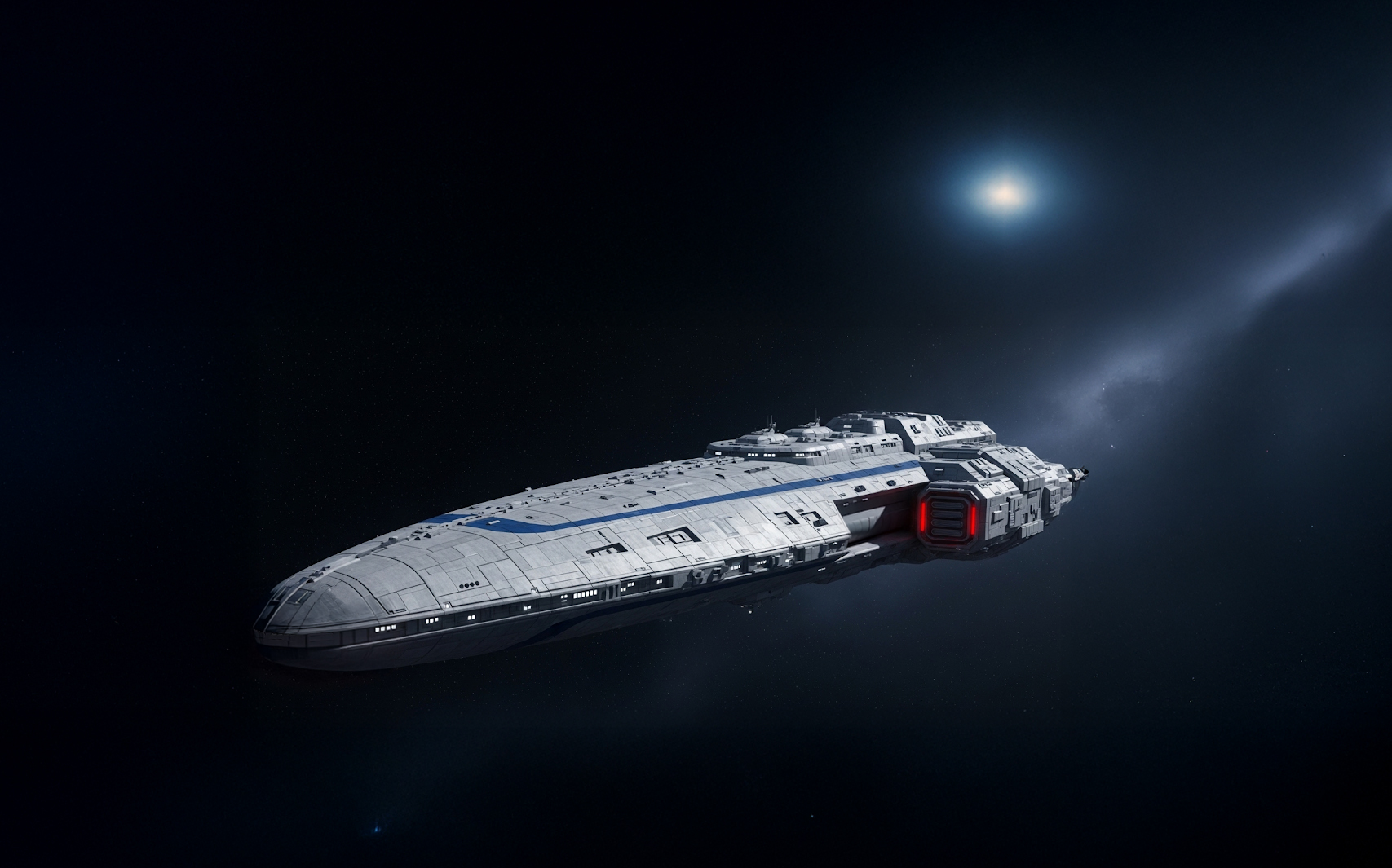The Cosmic Explorer Overview
The Cosmic Explorer is a next-generation exploratory and scientific vessel constructed under the oversight of the Interplanetary Security Alliance (ISA). Originally commissioned as a research and exploration ship, she represents the cutting edge of human engineering in the late 22nd century. It serves as a bridge between humanity’s established interplanetary fleet and the uncertain frontier beyond the solar system.
Commissioned in 2180, the first of its kind, the Cosmic Explorer, was constructed at the Earth-Moon Assembly Platform also known as “The Forge” which orbits the moons L1 point.

Mission Profile
The Cosmic Explorer was intended for peaceful purposes: charting deep space, establishing first-contact protocols, and gathering data for humanity’s next great leap outward. But in the crucible of the alien assault on the Forge, she became something else; a lifeboat, a warship, and the last fragile hope for Earth’s survival.
Hull and Dimensions
The vessel measures just over 250 meters in length and about a 55 meters beam, placing it in the mid-range between cruisers and bulk freighters. Designed with long-duration missions in mind, her hull integrates layered composite armor and radiation shielding to withstand both natural hazards and potential hostile encounters.
Propulsion:
The ship is equipped with quad high-output fusion drives for sustained intra-system maneuvering and a QFMP drive for long distance travel.
The Quantum Field Manipulation Propulsion, or “slip” drive, works by shaping the quantum vacuum itself instead of relying on propellant. By generating a tuned containment field, the system forces virtual particles into real states in a controlled cascade, drawing usable energy from zero-point fluctuations. That energy is directed through the drive assemblies as sustained thrust, allowing ships to cross interplanetary distances in a matter of hours rather than weeks. To crews, the sensation is unlike traditional acceleration, it feels as if the ship is gliding effortlessly, “slipping” through space on an invisible current.
The drive section dominates the aft of the ship, supported by oversized reactor housings, redundant cooling arrays, and oversized containment fields to stabilize its experimental core.
Crew and Operations:
Designed to host a complement of around 120, the ship’s interior is arranged with modular workspaces, research laboratories, and command facilities. At the time of the Forge disaster, however, she carried only a skeleton crew: a mix of officers, cadets, and civilian technicians. Despite this, her systems were automated enough to allow a reduced number of personnel to keep her operational.
Defenses:
- Advanced Armor: Harvested from the asteroid belt, refined iron-nickel alloy plates provide a dense first line of defense. Secondary armor is reserved for critical areas and consists of Refractory High-Entropy Alloys (RHEAs) stabilized in nanocrystalline matrices.
- X-ray Point Defense Grid – Automated anti-projectile system.
- 4x SRM-12 “Viper” Rotary Missile Launchers – High-agility interceptors for missile and fighter defense.
- Redundant Systems Architecture: Damage-control and life-support systems are built with maximum survivability in mind.
AI Integration:
The Cosmic Explorer is unlike any other fleet ship because it carries two full general artificial intelligences: Aurora and Valkyrie. Most vessels rely on limited assistant-level AIs to manage systems such as reactors, slip drives, and communications. Aurora, created by Frontier Software on Mars, was built to process vast amounts of scientific data, support research missions, monitor ship functions, and safeguard the crew. Valkyrie was designed for the opposite role, handling tactical planning, maneuver, target acquisition, and shipboard security. Each AI could run the ship on its own, but together they balance science and survival in a way no other vessel can match.